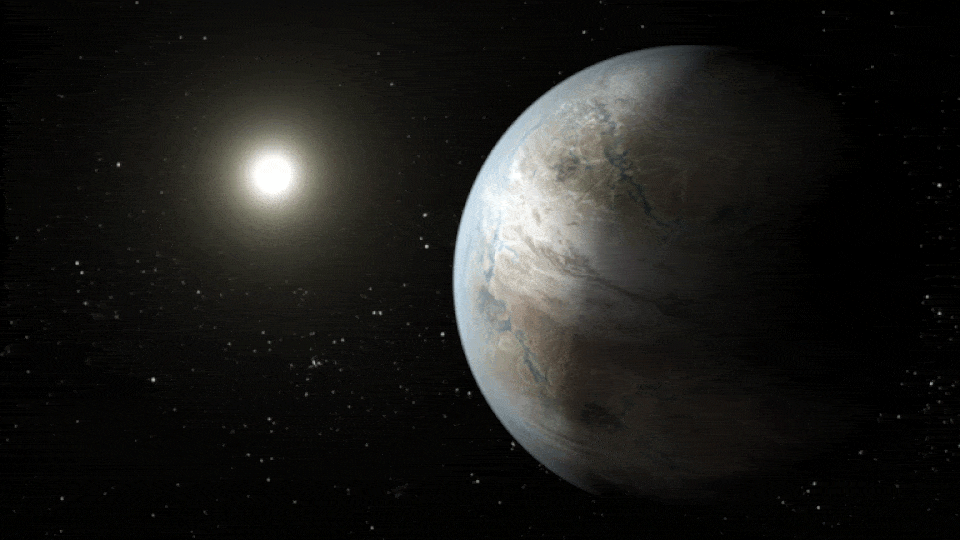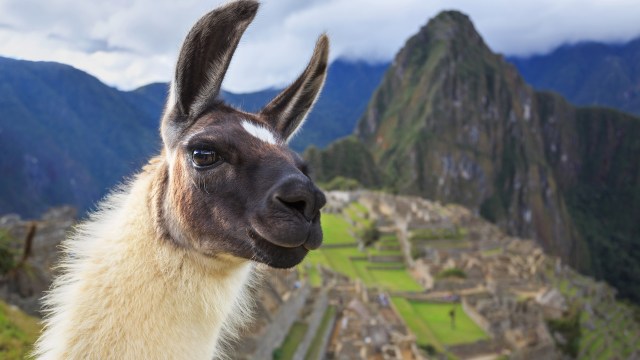Meet TOI-700’s exoplanets: Our best bet for alien life
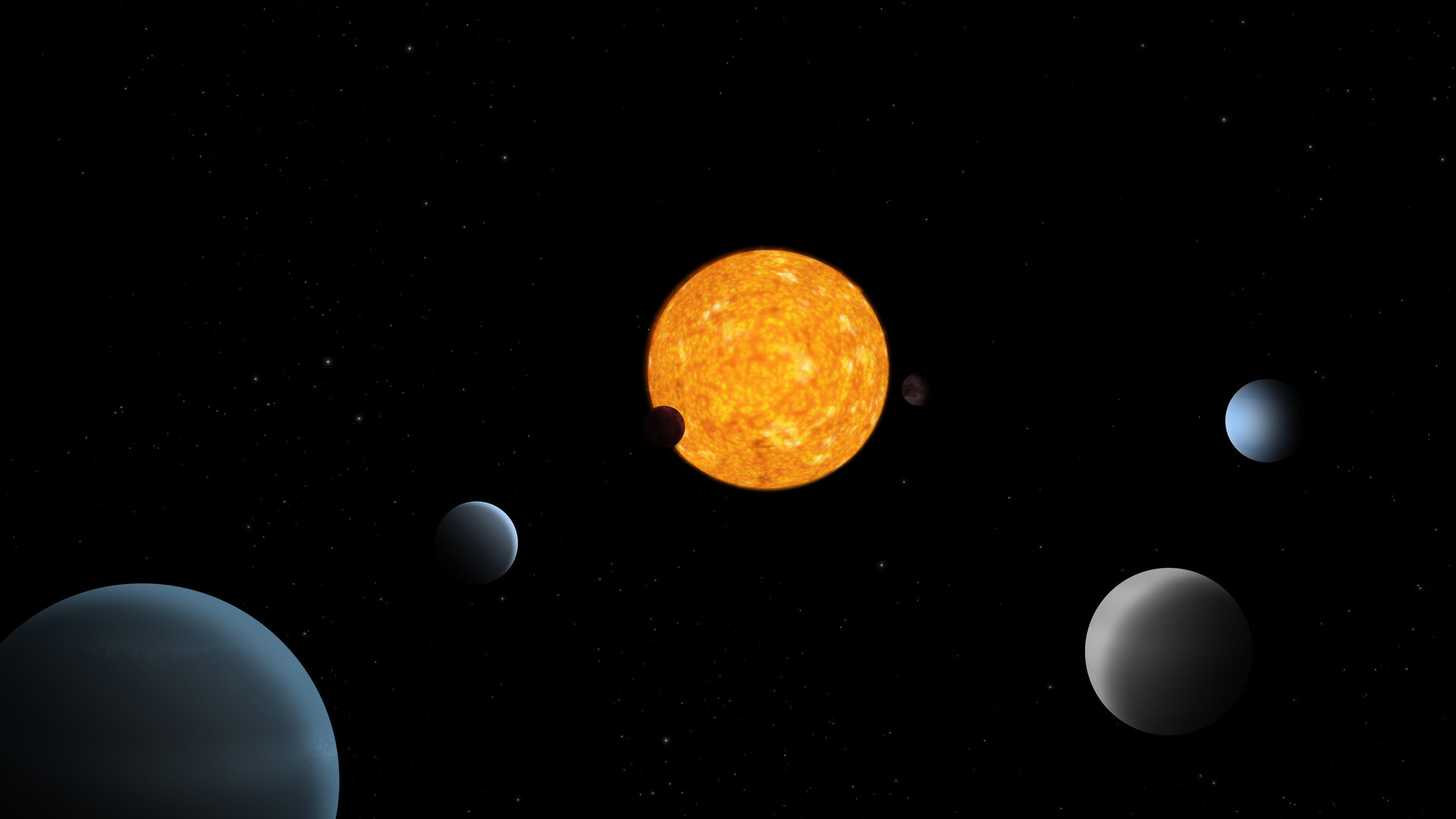
- Our Universe is rife with stars, planets, and — quite probably — life, although we’ve yet to discover it beyond Earth.
- However, the ideal candidate will be Earth-sized, stable, at a temperate distance from its parent star, and safe from stellar violence.
- The TOI-700 system made a splash years ago as the first Earth-sized exoplanet within the “habitable zone” discovered by TESS.
- Now, a second Earth-sized exoplanet has been found: this time in the so-called “optimistic habitable zone.” These two worlds both have outstanding chances for life, with perhaps even more to come.
Somewhere out there, likely right within the Milky Way lies the very first inhabited planet that humanity will discover. Although we don’t know which world it is or how long it will take us to find those critical, unambiguous biosignatures, we fully expect that progressively better and more suggestive observations will pave the road toward its discovery. After all, the ingredients for life are found all throughout the Universe, and each new stellar system that forms with rocky, terrestrial planets around it must be considered as a chance for something quite remarkable and unique to emerge.
Since 1990, we’ve discovered thousands of exoplanets: planets in orbit around other stars. Many are approximately Earth-sized; many orbit their parent stars at the right distance for liquid water to potentially exist on their surfaces; many are close enough that a future telescope — technologically within reach before the year 2100 arrives — could directly image them and determine whether they’re actually inhabited or not. Despite the fact that the overwhelming majority of known exoplanets were discovered by NASA’s now-defunct Kepler mission, the most likely system to house extraterrestrial life is the planetary system surrounding the star TOI-700, discovered by the ongoing TESS mission. Now known to have at least two potentially inhabited, Earth-sized worlds around it, it just might be humanity’s best bet for finding life outside of our Solar System.

When it comes to the search for inhabited exoplanets, we have to be honest about the fact that our ignorance is tremendous. We don’t know how frequently life arises in the Universe or where it’s most likely to do so. We don’t know how often that life survives and thrives over long periods of time, or how frequently it dies out very quickly. We don’t know the probability of a world developing complex or even intelligent life, and we don’t know whether the chemical reactions and processes that underlie life on Earth are common, rare, or even one-of-a-kind on our planet.
However, because the laws that govern the Universe are the same everywhere, and the ingredients within each part of the Universe can be measured, we believe we can identify which sets of conditions are likely to be the most conducive to life. In particular, the ideal candidate for discovering a potentially inhabited exoplanet should correspond to the following properties:
- it should be rocky, with a thin atmosphere,
- similar in size to Earth, but not much larger,
- around a star with a stable, continuous energy output,
- at a distance conducive to the presence of liquid water on its surface,
- with a similar abundance of heavy elements to our own Solar System,
- where enough time has passed so that life has had a transformative impact on the planet’s biosphere,
- and where it’s close enough so that near-future technology could reveal those relevant, key biosignatures.
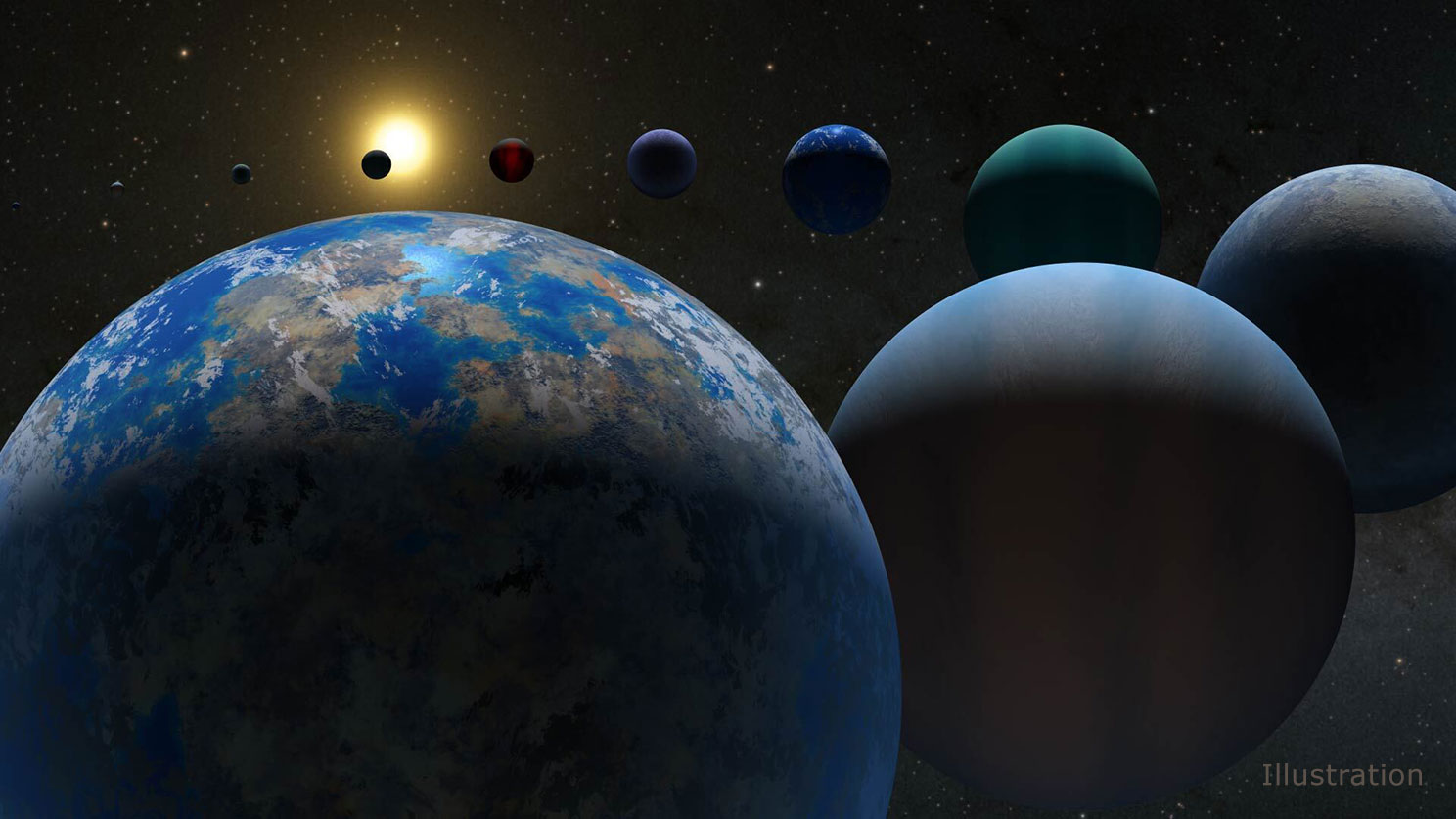
The first — and arguably, the most important — constraint on life is that any potentially habitable world requires a suitable star. If your parent star is too massive, it will undergo stellar evolution too quickly, roasting any life on the planet within only a few hundred million years: not enough time for anything interesting to arise. On the other hand, the most common type of star, the low-mass red dwarfs, require their planets to be in very close, tight orbits to receive an appreciable amount of stellar energy, but at those distances, these active, flaring stars would easily strip away any atmospheres. There must be a “sweet spot” in between the two extremes, where long-term, stable, habitable conditions are likely.
The second constraint — arguably, one that’s at least as important as the first — is on the nature of the planet in question itself. Although there’s a large gap between the properties of a planet that’s the mass/size of something like Venus or Earth and the mass/size of something like Uranus or Neptune, only a planet with an accessible, solid surface and a thin gaseous atmosphere are of interest for life forms similar to those found on our own planet. As a result, Mercury-sized planets are probably too small, but you can only be about 25-30% larger than Earth (and about twice as massive) before your atmosphere becomes too thick for Earth-like life.

Although more than 5000 exoplanets have now been identified, confirmed, and characterized, very few of them actually make for good candidates for life according to these criteria. Most of the exoplanets that have been found are quite a fair amount larger than Earth, and are likely to have a substantial volatile envelope of gases surrounding them, disfavoring the potential for surface life. Most of the Earth-sized exoplanets we know of are hot: very close to their parent stars, and well inside any reasonable definition of a “habitable zone.”
And most of the Earth-sized exoplanets that are found within their star’s habitable zones are found around the lowest mass stars of all: tiny red dwarf stars that tend to flare copiously, making the survival of an orbiting planet’s atmosphere unlikely. Most of the exoplanets touted as the likely ones to harbor life — including Proxima Centauri B and the planets orbiting the TRAPPIST-1 system, for example — are found around actively flaring red dwarfs that are quite likely to strip the atmospheres off of any surrounding worlds in short order.

It’s precisely this combination of factors that makes the TOI-700 system such a compelling, interesting one. Although TOI-700 is an M-class star — a red dwarf — it’s one of the more massive red dwarfs out there, with more than 40% the mass of the Sun. As it only slowly rotates, completing a full 360° turn once every 54 days (even slower than the Sun), its activity level is quite low. Consistent with slow rotators, it has never been seen to flare, has negligible sunspot activity, and indicates that the star has been around for a while: at least 1.5 billion years already. Additionally, it has almost an identical heavy element content to our Sun.
TOI-700 was initially, from the TESS mission, discovered to have three planets around it, is now known to possess at least four, with two of them potentially inhabited. Its known planets are:
- TOI-700b, with an orbital period of 10 days and a size that’s 91.4% as large as Earth,
- TOI-700c, with an orbital period of 16 days and a size that’s 2.6 times as large as Earth,
- TOI-700e, the new planet, with a period of 28 days and that’s 95% the size of Earth,
- and TOI-700d, the first Earth-sized planet found in the habitable zone of a stellar system by TESS, with a period of 37 days and a size that’s 105% of Earth’s.
While TOI-700c is likely some sort of mini-Neptune, the other three planets are almost certainly rocky. Interestingly, now that a fourth planet has been discovered, it appears these planets orbit in a series of resonances. In particular:
- TOI-700b completes 8 full revolutions for every 5 full revolutions completed by TOI-700c,
- TOI-700c completes 7 full revolutions for every 4 revolutions by TOI-700e,
- and TOI-700e completes 4 revolutions every time TOI-700d completes 3 revolutions.
With the limited amount of quality observing time that TESS spends on an individual target such as this, it’s important to recognize that there are likely more worlds exterior to TOI-700d that remain to be discovered, and that more observing time will be key to uncovering them.
Importantly, around every star, there should be a region that we call the habitable zone: where, if the planet were to have a similar atmosphere and composition to Earth, it would have liquid water on its surface at its present distance from its parent star. There’s also the extended (or optimistic) habitable zone, where somewhat tinkering with the planet’s atmospheric properties could still admit surface liquid water under the right conditions.

When you apply that set of conditions to the TOI-700 system, you find that the inner two planets, TOI-700b and TOI-700c, are far too hot to be of interest for any sort of biological activity, with TOI-700c also facing the issue of likely not being a rocky planet. TOI-700e and TOI-700d, however, are almost certainly rocky in nature, with the innermore planet being found in the “optimistic” habitable zone and the outermore planet located in the normal habitable zone. Both of these planets, even if tidally locked to their star, might still be excellent candidates for hosting life and being actually inhabited.
There’s also the suggestion — compelling because of how much farther out than the orbit of TOI-700d the habitable zone of the parent star extends — that perhaps there’s another planet, perhaps also rocky, that exists maybe smack in the middle of TOI-700’s habitable zone. With more TESS data and the opportunity to detect less frequent but still periodic transits on the way, we might have as many as three or even four candidate worlds that could be home to life.
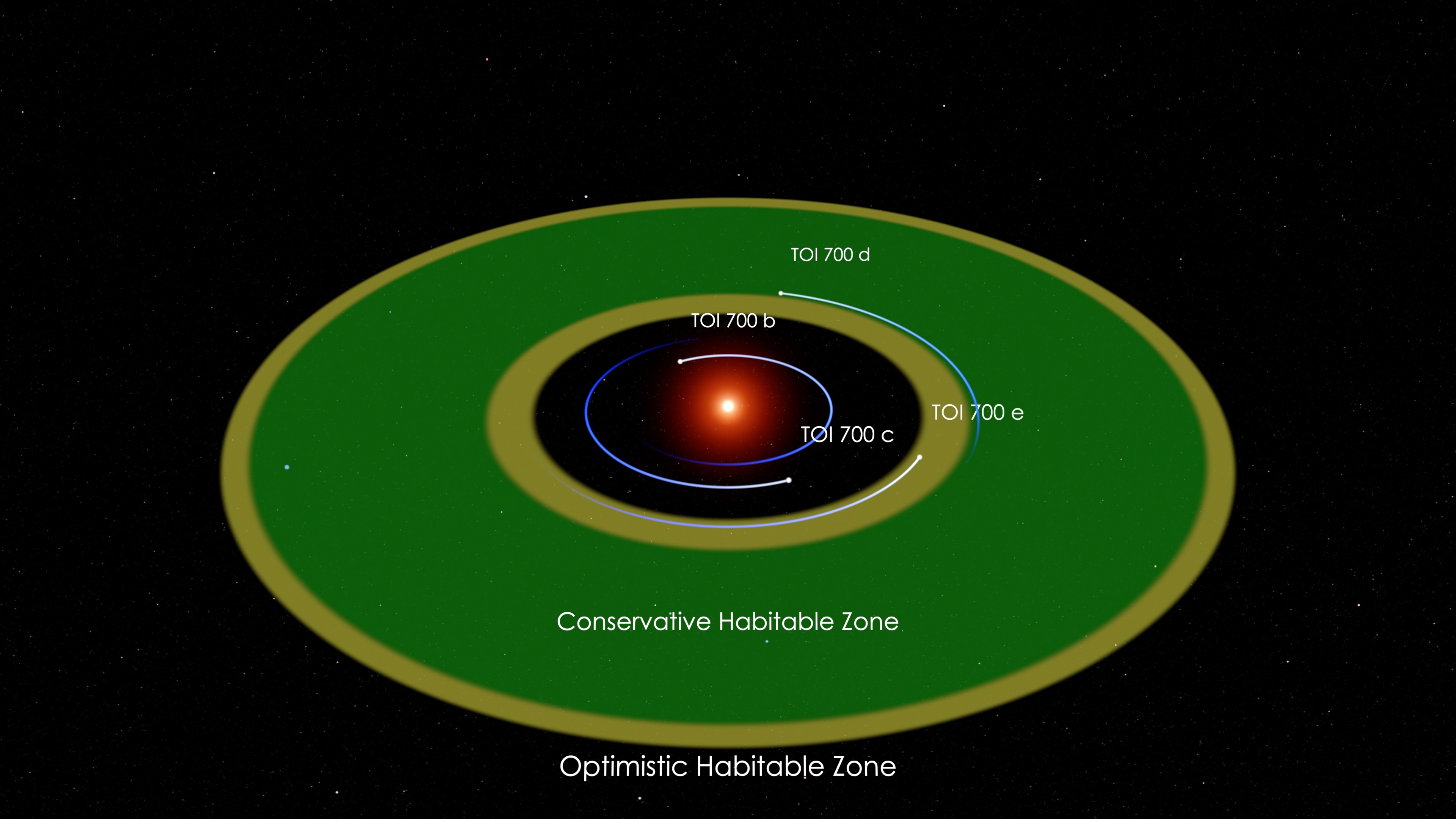
There are a lot of worries about whether life is even possible around an M-class red dwarf star, however, that are not necessarily so easy to dismiss. These red dwarfs, overall, are pretty much guaranteed to tidally lock their orbiting planets to themselves, so that one side always faces their parent star and the opposite side always faces away. On average, they emit very little ultraviolet radiation and most of their energy is in infrared light, but with bursts of X-rays and lots of flares. It’s often why people talk about stars that are Sun-like — the K-class (slightly less massive than the Sun), G-class (which includes the Sun), and F-class (slightly more massive than the Sun) — as ideal candidates for inhabited planets.
But this is only a general thought, not a hard-and-fast rule. TOI-700 is very interesting for a red dwarf star, because much like two of Kepler’s stars of interest, Kepler-186 and Kepler 438, both of which also possess potentially rocky, habitable planets, it’s very close to the border between K-class and M-class stars. If these stars don’t flare and don’t strip their orbiting planets atmospheres away from them, they might be relatively ideal locations for life to arise and thrive for extremely long periods of time.

Importantly, there’s a lot of new data coming on this system. TESS is about to enter a period where it will survey the region of sky containing this star and its system of planets, collecting more data that might potentially reveal additional, outermore planets. There has been a substantial amount of observing time awarded to use the ESPRESSO instrument aboard the ESO’s Very Large Telescope to track how the motion of the parent star, TOI-700, changes over time, which should do an excellent job of revealing the planetary masses of the planets present in this system, particularly the innermost ones.
And there’s also data coming about the ultraviolet spectrum of the star, which could lead to conclusions about the likely atmospheric behaviors and properties found on the orbiting planets. Although the planets are all likely tidally locked, there are still viable scenarios where these worlds are habitable. If the atmosphere is rich in carbon dioxide, the world will be uniformly hot, with planet-encircling winds upon it. Although life is disfavored, a wet, ocean-covered world with those properties might still allow habitability. But a cloudless, oceanless world with an Earth-like atmosphere would possess winds directed from the night side to the day side, with a ring of potential habitability on the day/night boundary. With upcoming measurements, we might be able to draw inferences about the potential habitability of the surrounding worlds.

There are only a scant few planetary systems that are truly excellent candidates for having inhabited worlds around them, and the TOI-700 system is, by many metrics, a contender for the most likely system known today to be home to biological activity around it. It’s been around for more than 1.5 billion years: more than enough time for biological activity to transform the thin region where the planet’s surface meets its atmosphere into a rich biosphere, with the potential to trigger planet-wide changes to their own atmospheres.
If life were to transform the composition of such a world’s atmospheric contents, we could potentially detect it with a future observatory, such as the upcoming Habitable Worlds Observatory or, alternatively, the proposed LUVOIR mission. Although we have yet to find our first instance of an inhabited planet beyond planet Earth, it’s something that’s not only within the reach of 21st century technology, it’s something that we’re closing in on, little by little, with each subsequent observation. There are now a small number of systems that make excellent targets in the quest for life beyond our own backyard, and at just 101 light-years away, TOI-700 might provide humanity with our best opportunity yet!
Ethan Siegel thanks Dr. Emily Gilbert and Gabrielle Suissa for informative discussions about the TOI-700 system.

